Join Our Newsletter for Cozy Home Inspiration, Family Fun, and Delicious Recipes Every Week
12 Charming Japanese Kitchen Ideas
When I first stepped into the house, I was enchanted by the serene layout, the updated bathroom, and the soft light pouring through the shoji-style windows.
But when I reached the kitchen, it was a different story. Mold, sagging panels, outdated wiring, and possible ceiling damage from years of cooking steam or even water leaks. It was clear my kitchen hadn’t aged elegantly.

I had a vision: I wanted to complete my dream Japanese kitchen that would blend minimalism and some charm, just like the rest of my home I had been slowly transforming.
What scared me wasn’t the grime or even the possible roof work; it was the unknowns. Would this be a simple renovation, or would I run into deeper issues like structural rot or fire code violations?
I learned quickly: in Japan, especially with older homes, a Japanese kitchen renovation isn’t just about ripping out old cabinets; it’s about understanding zoning laws, rebuild regulations, and preserving what you can while modernizing within strict limits.
I had to bring in an inspector familiar with Japanese code, not only to assess moisture damage but also to ensure the property was even legally renovatable under the new 2025 laws. With so many old wooden homes being labeled non-rebuildable, my dream was hanging in limbo.
But I continued my adventure equipped with my plan, and I started myself into it. In order to create a restaurant-like vibe in the center of my house, I completely remodeled the kitchen using warm walnut veneer and a Bora teppanyaki grill.
Now, my Japanese kitchen is deeply personal. It honors tradition and proves that even the most difficult kitchens can be transformed into classic ones.
12. Open Concept Japanese Kitchen Layout
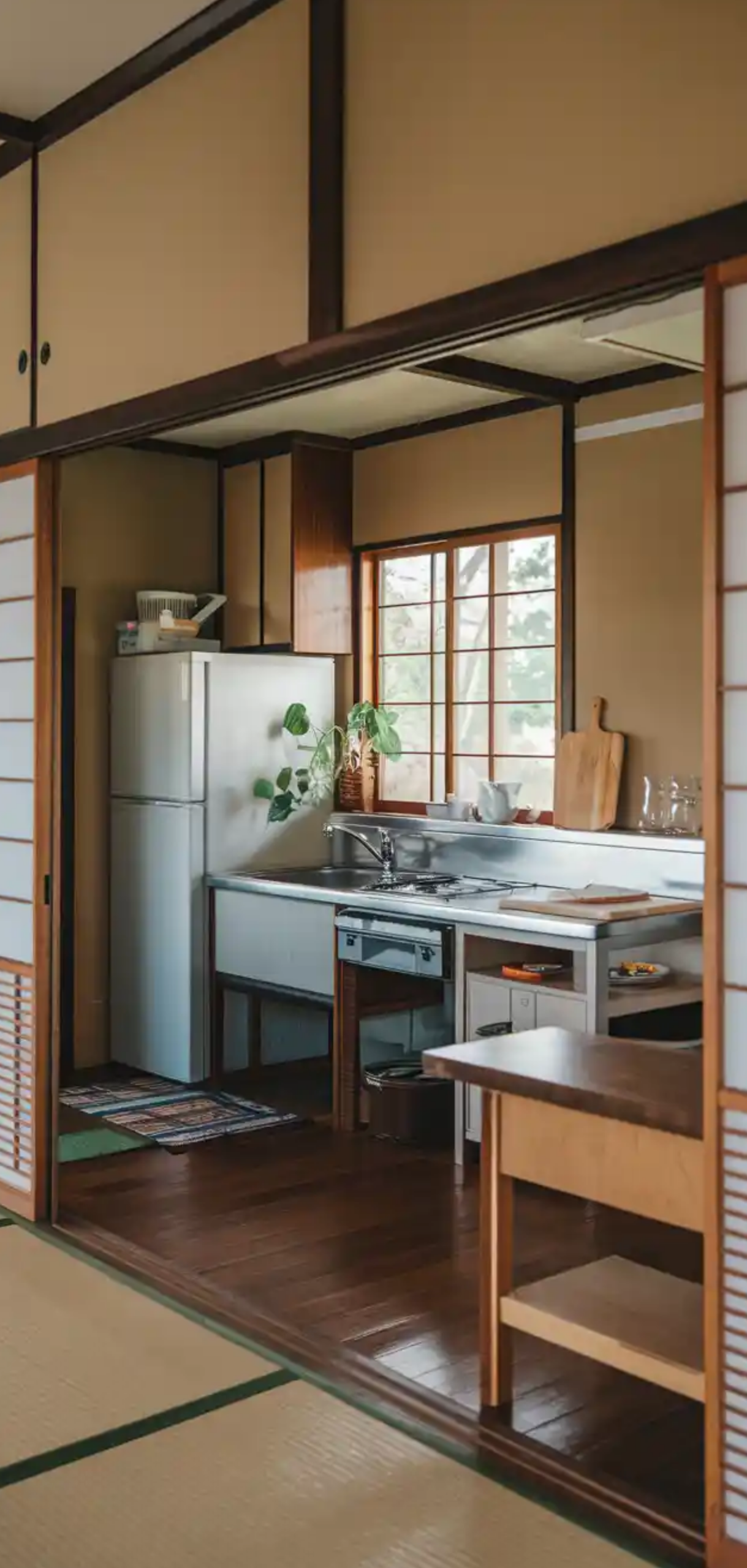
Creating an open-concept layout is a cornerstone of modern Japanese homes.
Importance of Space and Flow
- Encourages a natural transition between cooking and living areas.
- Allows light to flow freely throughout the home.
- Enhances communication between family members or guests.
Japanese Kitchen Tips:
- Remove upper cabinets to reduce visual clutter.
- Use kitchen islands with open shelving.
- Combine the kitchen with a dining area using matching wood tones.
11. Tatami-Inspired Flooring in Kitchens
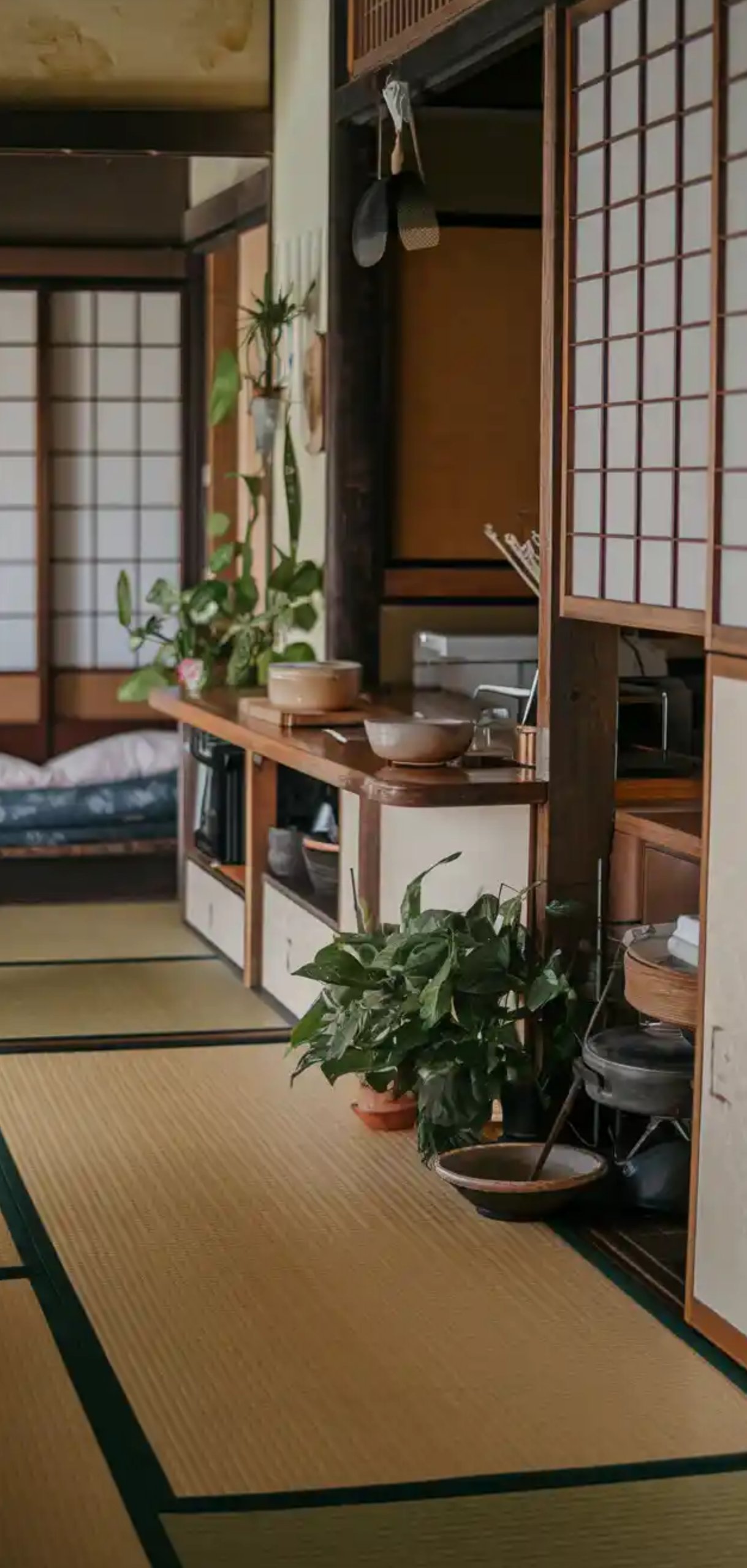
Tatami mats are iconic in Japanese homes, and their influence can extend to kitchen flooring.
Traditional Meets Practical
- Use tatami-style vinyl or laminate flooring with a woven texture.
- Soft underfoot, perfect for long periods of standing.
- Brings a cultural touch without compromising hygiene or durability.
Japanese Kitchen Tips:
- Choose waterproof options for kitchen safety.
- Match flooring tones with cabinetry for harmony.
10. Shoji Sliding Doors for Seamless Transitions
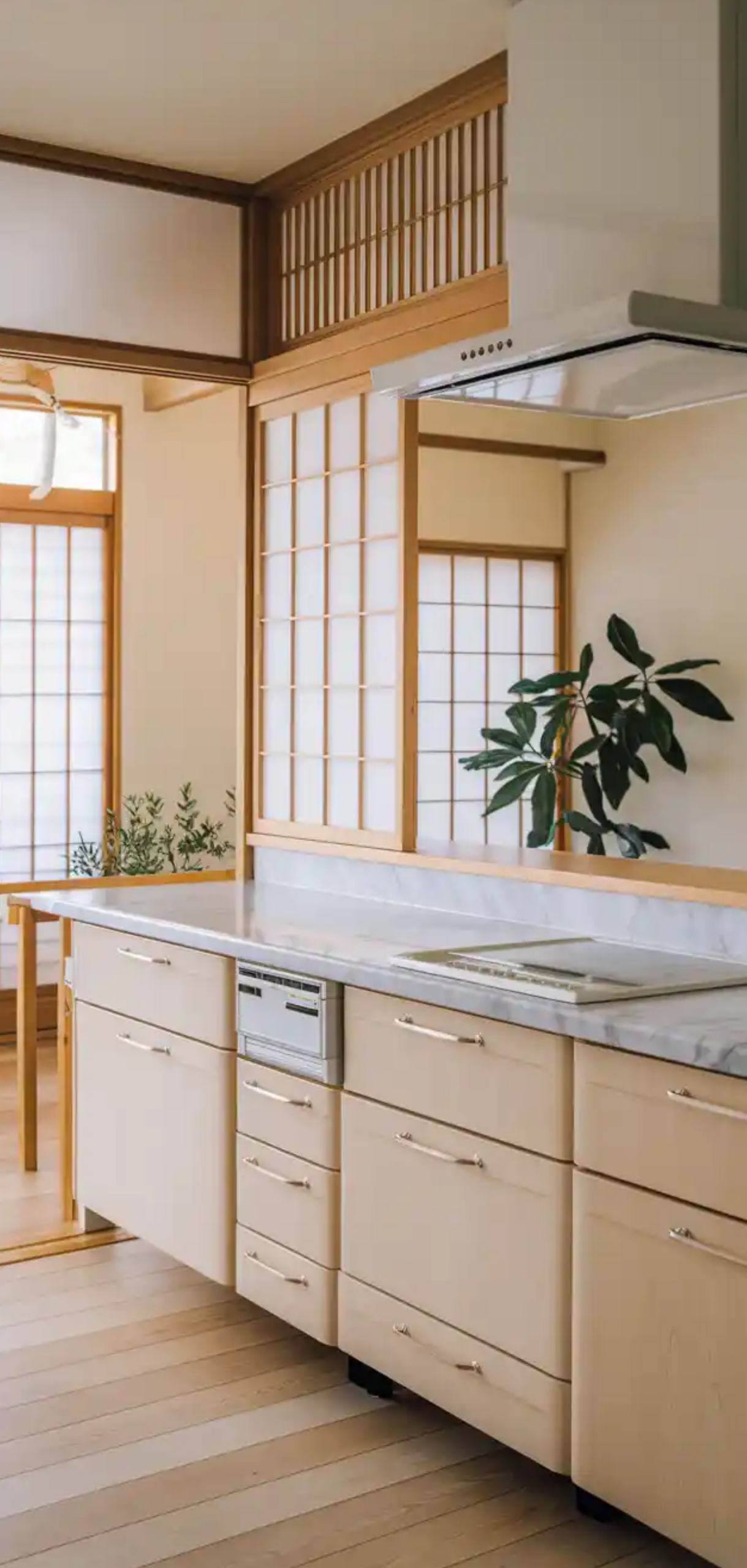
Shoji doors add charm while managing space efficiently.
Light Control and Privacy
- Traditional rice paper doors filter soft natural light.
- Create privacy between the kitchen and dining or hallway areas.
- Slide instead of swing, perfect for tight spaces.
Japanese Kitchen Tips:
- Use frosted glass for a modern take.
- Install on tracks that align with the floor and ceiling design lines.
9. Built-in Storage with Hidden Compartments
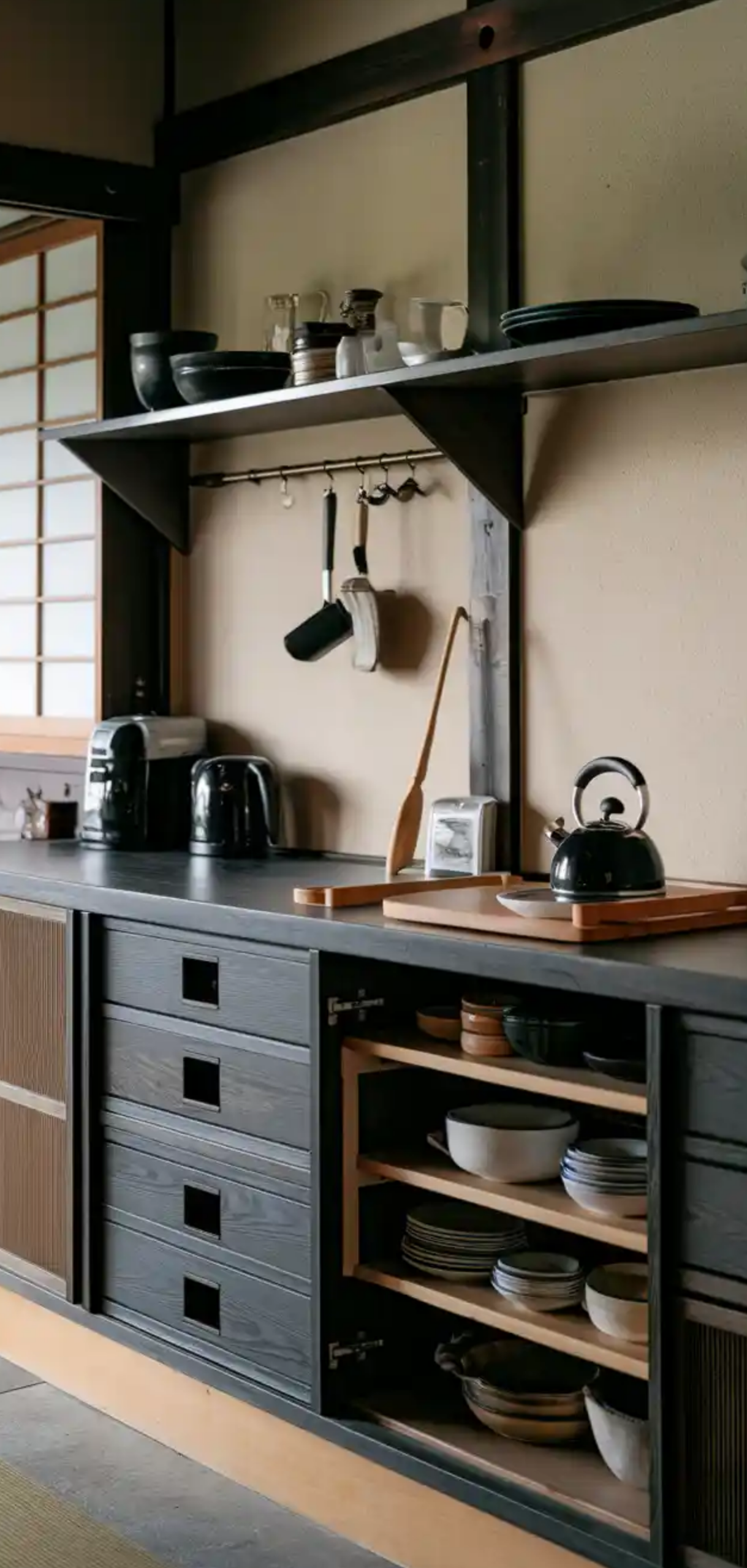
Clutter-free countertops are a staple of Japanese aesthetics.
Efficient Use of Vertical Space
- Cabinets can include lift-up or pull-out mechanisms.
- Hide appliances like microwaves and rice cookers.
- Add toe-kick drawers or slim sliding pantry racks.
Japanese Kitchen Tips:
- Opt for custom cabinetry in natural wood grain.
- Use Japanese-style basket inserts for hidden organization.
8. Minimalist Wood Cabinetry
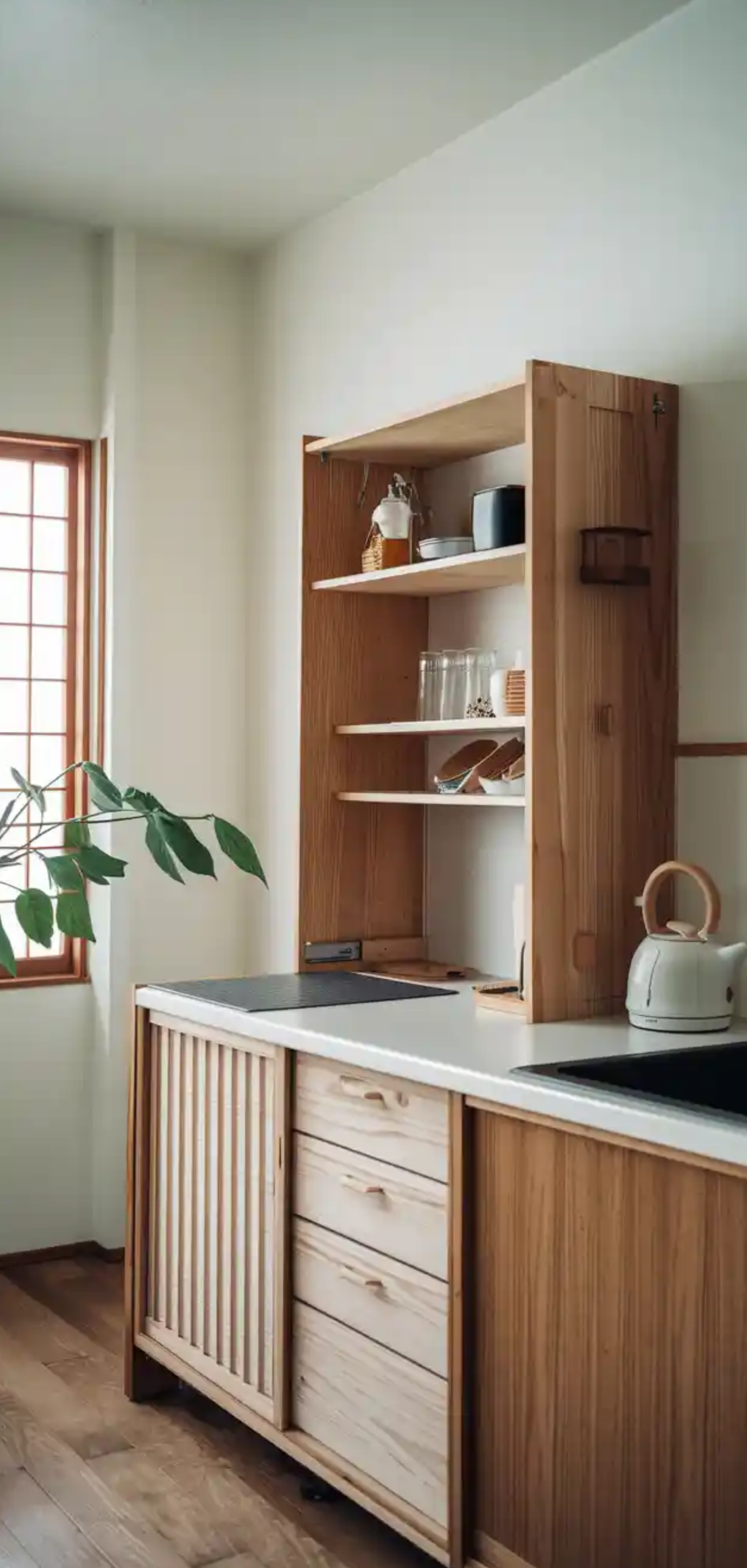
Natural wood is both practical and aesthetic.
Natural Materials and Clean Lines
- Light oak, bamboo, or walnut are popular choices.
- Handles are often recessed or hidden.
- Emphasis on symmetry and alignment.
Japanese Kitchen Tips:
- Use clear matte finishes to protect while maintaining texture.
- Choose cabinetry without upper molding for a seamless look.
7. Compact Modular Appliances
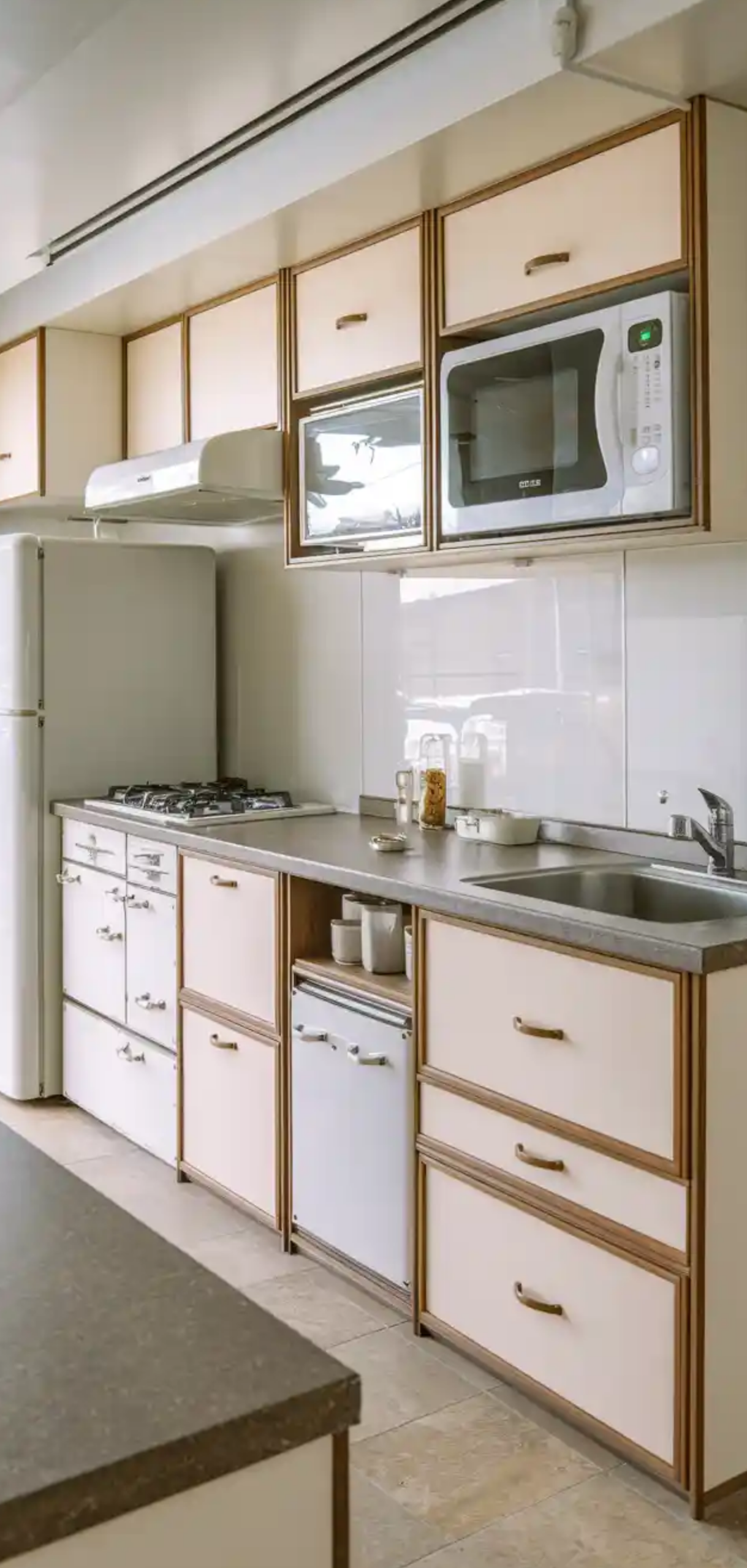
Appliances should blend into the layout rather than dominate it.
Integrating Tech into Traditional Spaces
- Induction cooktops and drawer dishwashers save space.
- Slim refrigerators and microwaves fit seamlessly into cabinets.
- Consider multi-use rice cookers with minimalist design.
Japanese Kitchen Tips:
- Prioritize energy-efficient models with clean finishes.
- Use sliding or hinged cabinet doors to hide appliances when not in use.
6. Earthy, Neutral Color Palettes
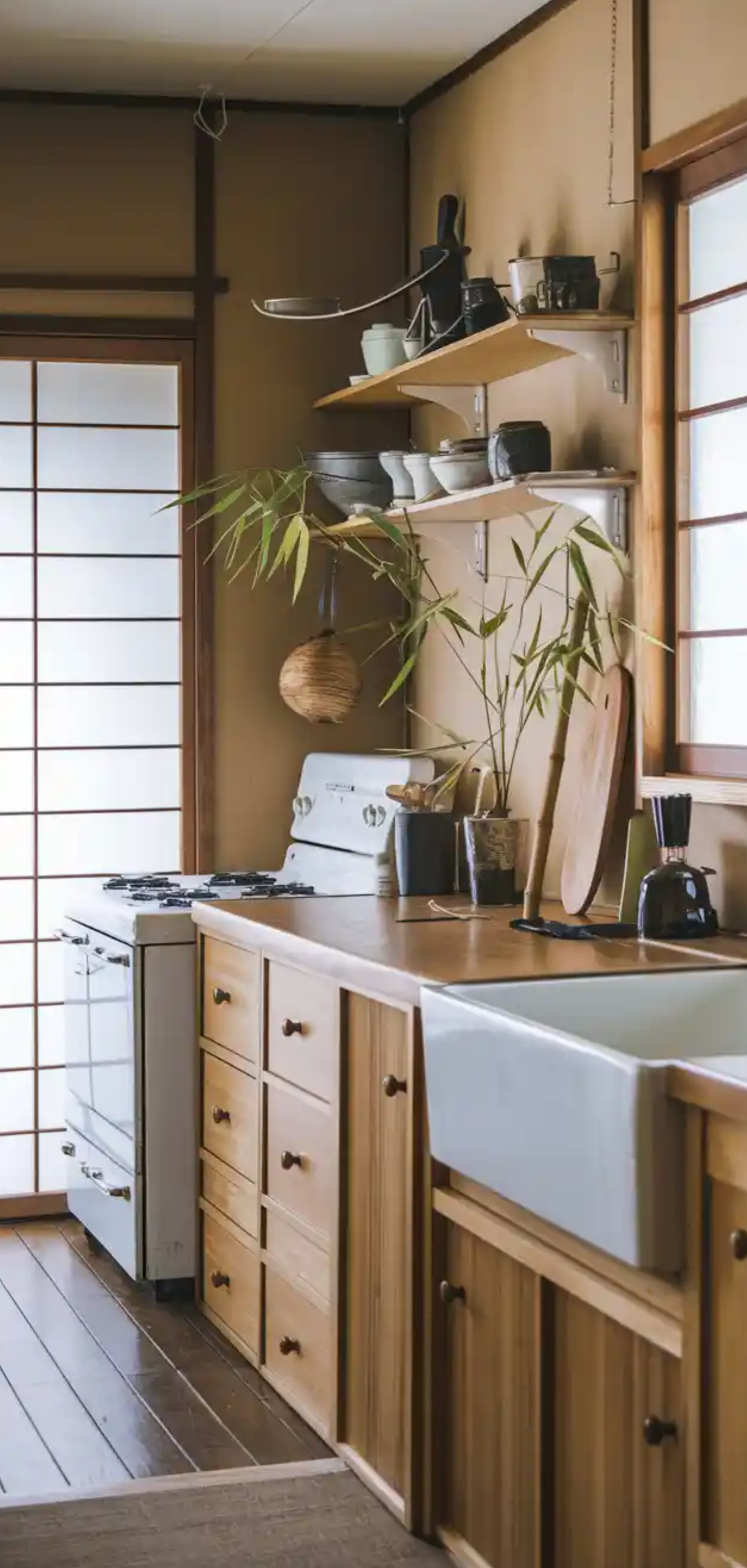
Color affects the atmosphere and perceived spaciousness.
Mood and Atmosphere
- Popular colors: white, beige, warm grey, soft green.
- Complement with textures, stone counters, raw wood, ceramics.
Japanese Kitchen Tips:
- Avoid overly bright or saturated colors.
- Paint walls and ceilings in the same tone to unify the space.
5. Japanese Counter Space Solutions
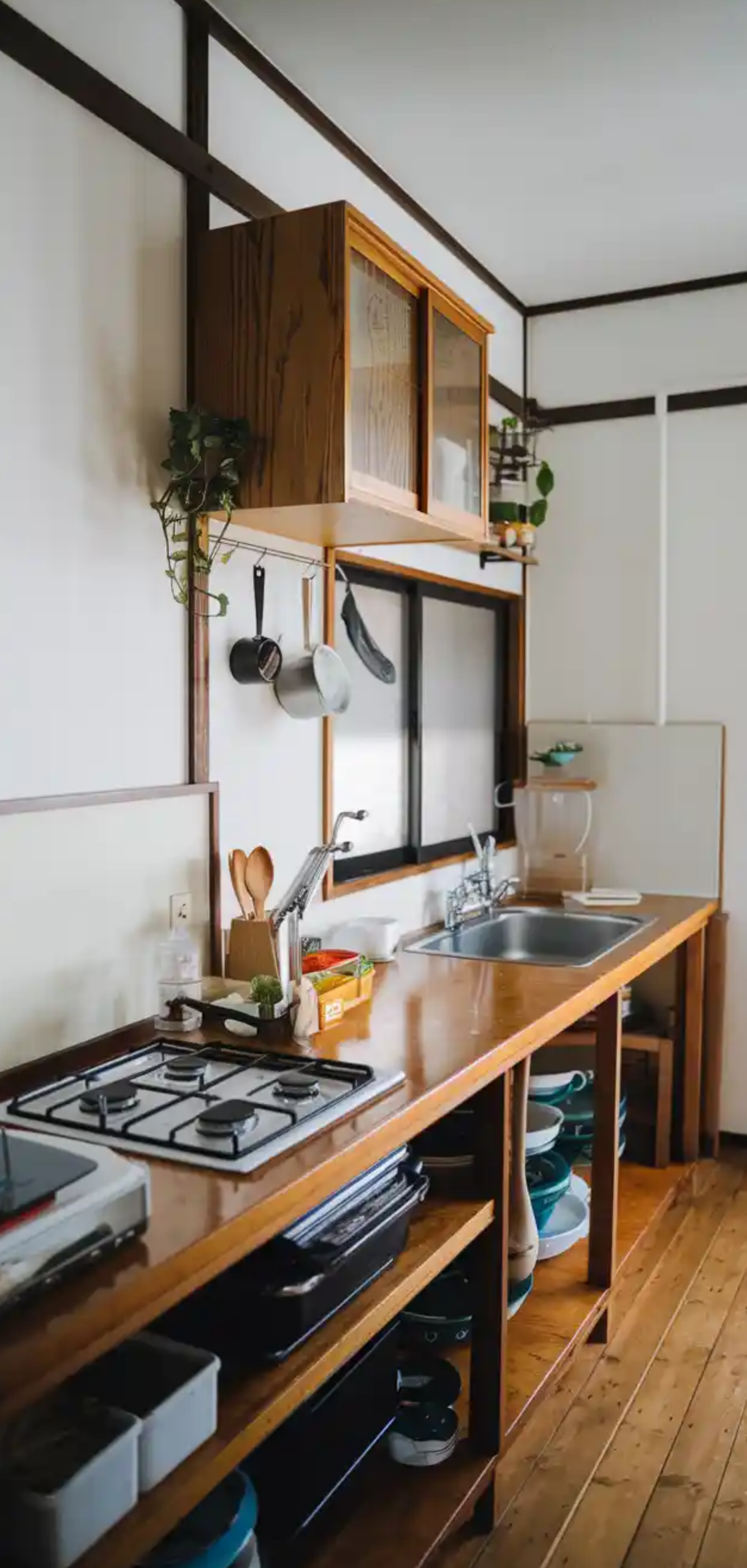
Maximizing counter utility is essential, especially in smaller kitchens.
Maximizing Small Kitchen Functionality
- Use cutting boards that fit over sinks or stoves.
- Add slide-out prep tables beneath counters.
- Floating shelves above counters double as prep and display space.
Japanese Kitchen Tips:
- Install under-shelf lighting to brighten prep zones.
- Keep only daily-use items on counters.
4. Indoor Herb Gardens & Bonsai Décor
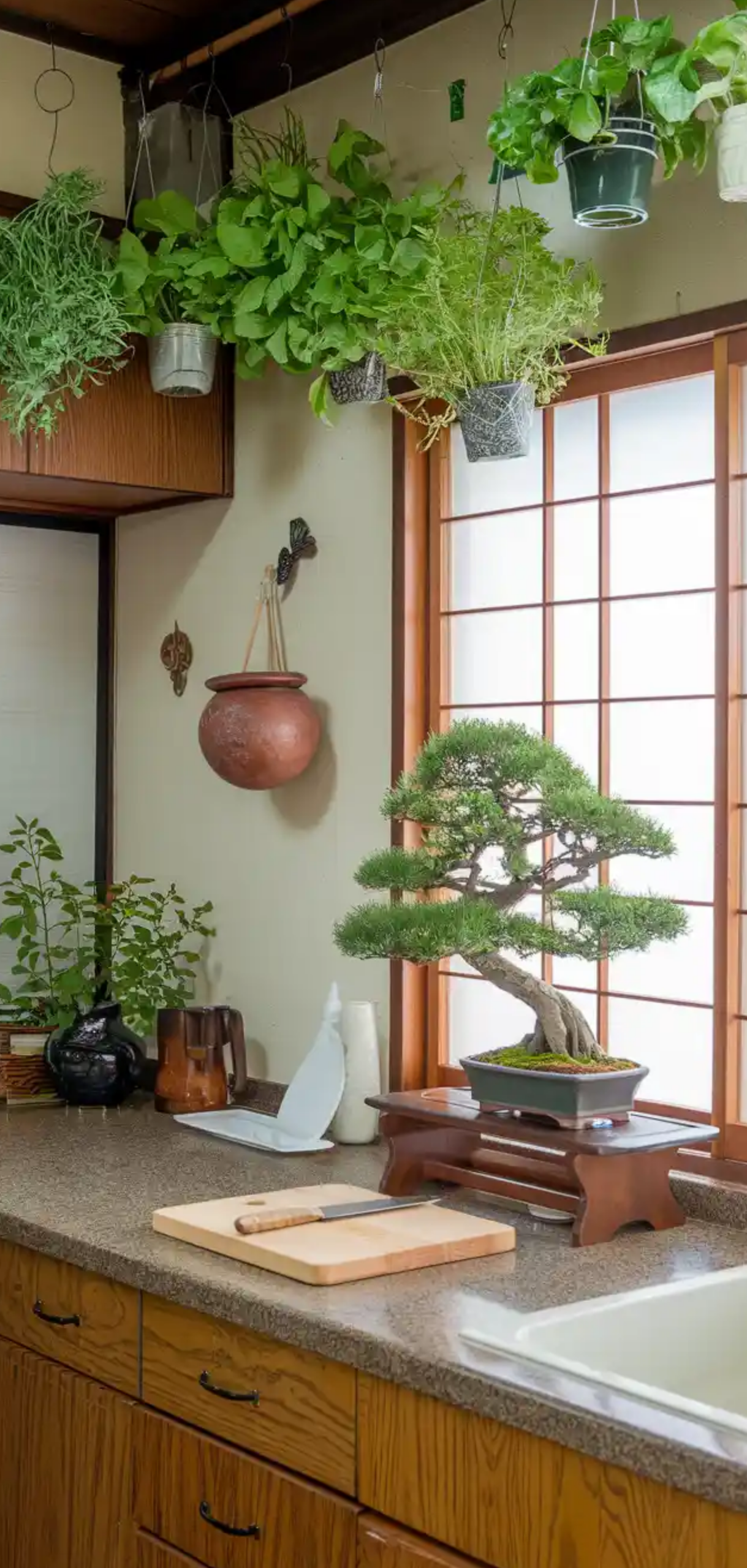
Nature is core to Japanese design philosophy.
Nature Inside the Home
- Grow green onions, shiso, or basil in a kitchen window box.
- Place bonsai trees or succulents on floating corner shelves.
Japanese Kitchen Tips:
- Use ceramic planters in neutral tones.
- Rotate plants monthly to ensure even growth and light exposure.
3. Hanging Kitchen Tools on Magnetic Rails
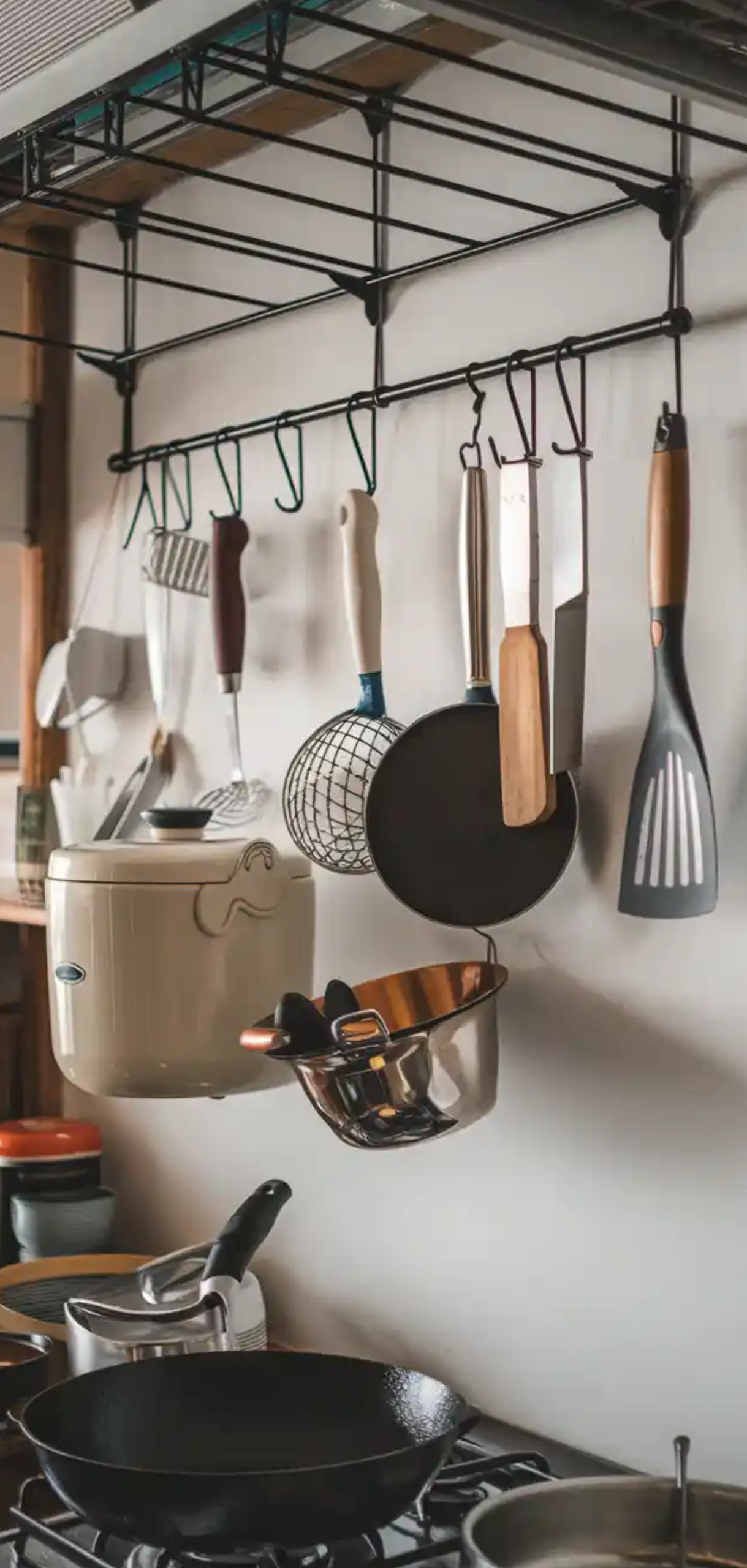
Simple and visually satisfying, this storage method keeps tools accessible.
Aesthetic Display & Easy Access
- Mount a magnetic strip or wooden peg rail near the prep area.
- Hang only aesthetically cohesive tools like wooden spoons, steel ladles, etc.
Japanese Kitchen Tips:
- Maintain symmetry: group similar tools together.
- Use minimalist hooks and avoid overcrowding.
2. Low Dining Tables for Kitchen Seating
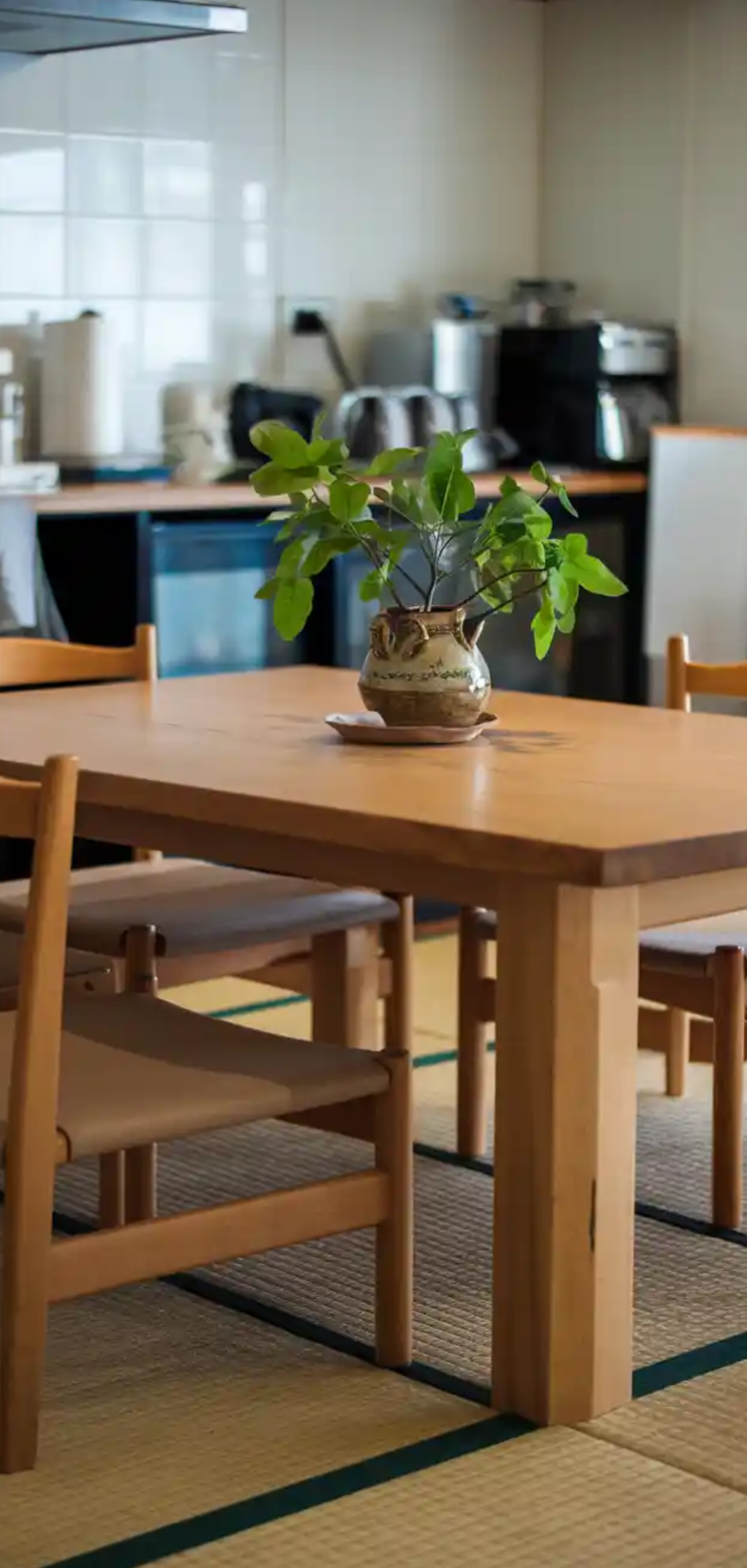
Low-profile tables add tradition and intimacy to dining spaces.
Traditional Meets Modern Dining Styles
- Choose a chabudai table for an authentic look.
- Pair with floor cushions or low benches.
Japanese Kitchen Tips:
- Use a nearby rug to delineate the seating area.
- Select lightweight, foldable options for flexibility.
1. Zen-Inspired Lighting Fixtures
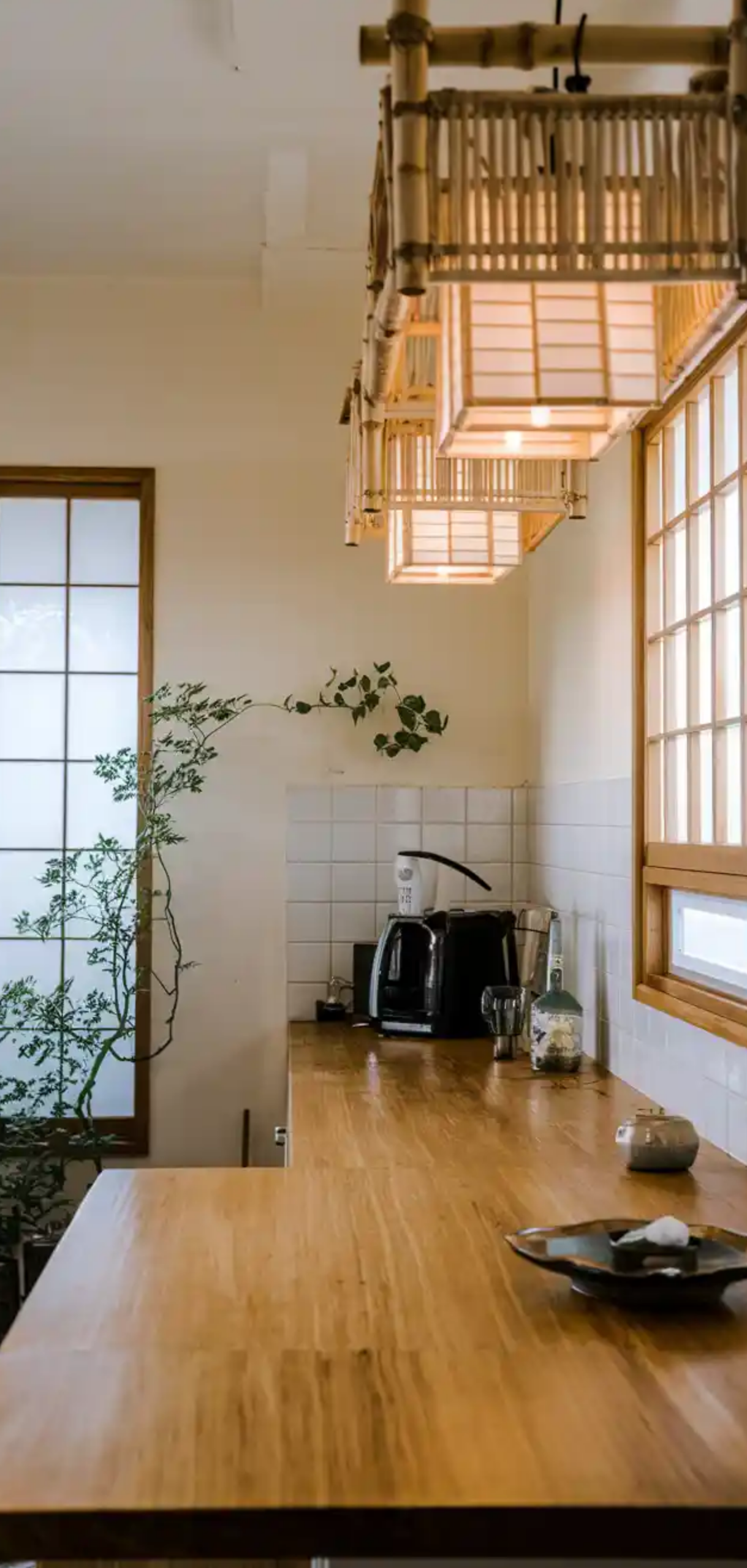
Proper lighting balances mood and task efficiency.
Ambience and Energy Flow
- Paper lantern pendants or wooden sconces are common.
- Combine ambient ceiling light with focused task lighting.
Japanese Kitchen Tips:
- Use warm white (2700K) bulbs to soften the environment.
- Dimmer switches add versatility to the lighting setup.
Conclusion
Designing a Japanese-style kitchen blends beauty with purpose. From tatami-inspired flooring to soft lighting and indoor herbs, each idea here contributes to a calm, mindful cooking experience. Whether you’re transforming a spacious kitchen or optimizing a compact space, Japanese design principles invite intentional living and aesthetic serenity.





